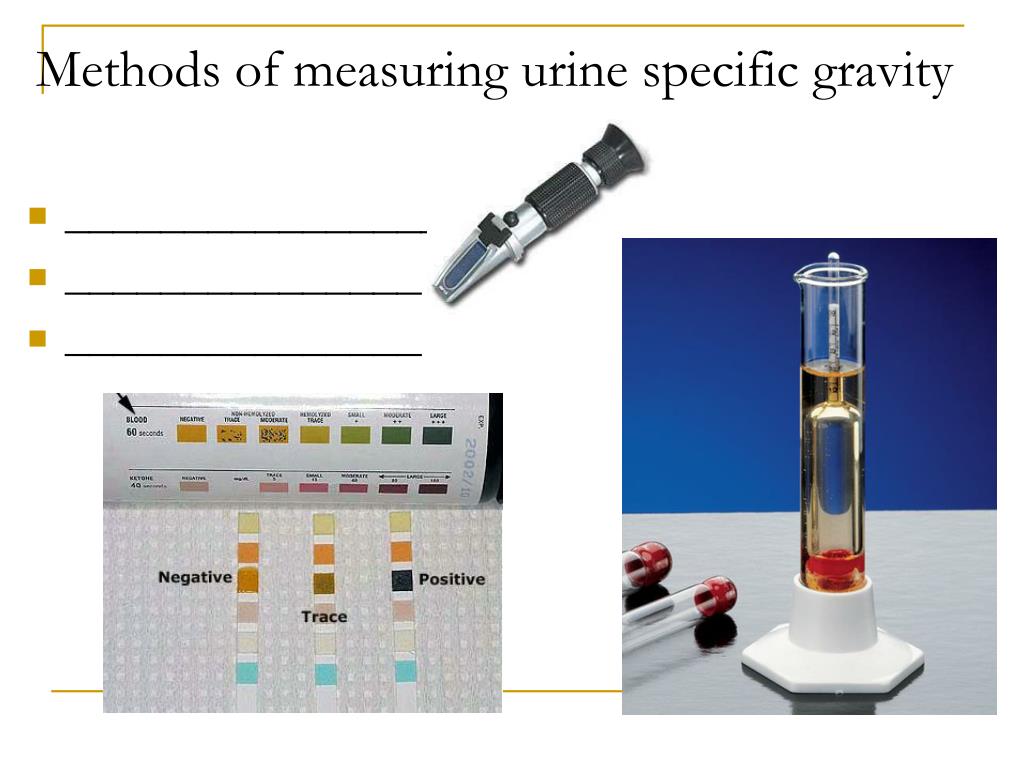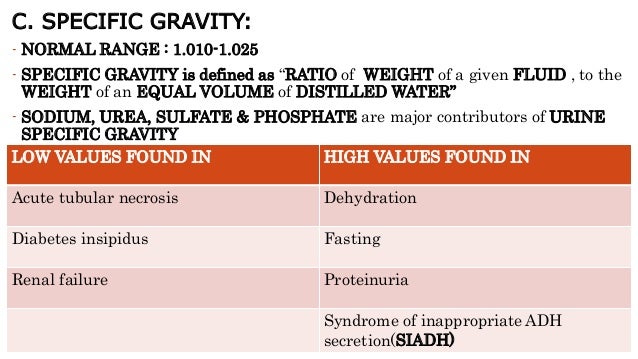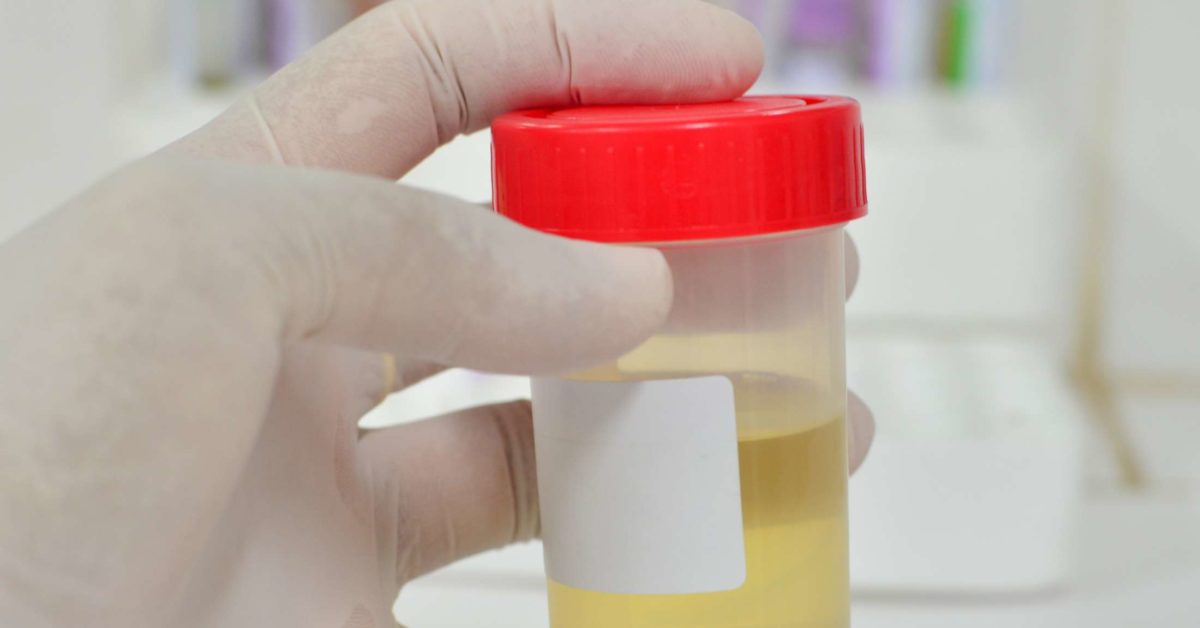

"Diabetes insipidus (di) and syndrome of inappropriate antidiuretic hormone (adh) secretion (siadh) are disorders of water balance caused by adh disturbances at opposite ends of a continuum. Ideally, urinary specific gravity should be measured immediately after the specimen is collected however, in some situations this is not possible." Refrigerated samples may have falsely elevated readings, as may specimens exposed to excessive heat and dryness (a result of evaporation). Freshly voided urine specimens at room temperature are desirable for testing specific gravity. Specific gravity can be measured with a refractometer, a dipstick that has a reagent area for specific gravity, or with a urinometer. Therefore, it is more accurate to measure urine osmolality in patients with glycosuria, proteinuria, or recent use of radiopaque dyes. For example, glucose, albumin, or radiocontrast dyes will elevate urinary specific gravity out of proportion to the actual concentration. However, one should be aware that heavy molecules not normally present in large quantities in urine can falsely affect specific gravity readings. Urinary specific gravity is elevated when there is a fluid volume deficit, as the healthy kidney seeks to retain needed fluid, thus excreting solutes in a small concentrated urine volume. Typical urine osmolality (another measure of urine concentration) ranges from 500 to 800 mosm/kg extreme ranges are from 50 to 1,400 mosm/kg.

The range of specific gravity in urine is from 1.003 to 1.035 most random specimens are between 1.012 and 1.025. Because urine contains electrolytes and other substances, its specific gravity is greater than 1.000. In this test, the concentration of urine is compared with the 1.000 specific gravity of distilled water. "Urine specific gravity measures the ability of the kidneys to concentrate urine. (from page 23-26, Fluid & Electrolyte Balance: Nursing Considerations, 4th edition, by Norma M. Specific gravity is decreased in overhydration, diabetes insipidus, renal failure, diuresis, hypothermia, glomerulonephritis and pyelonephritis." Specific gravity is increased in dehydration, pituitary tumor or trauma that causes siadh, decrease in renal blood flow (as in heart failure, renal artery stenosis, or hypotension), glycosuria and proteinuria, water restriction, fever, excessive sweating, vomiting, diarrhea, and x-ray contrast dye. Specific gravity is usually evaluated by the use of a refractometer or a dipstick. Knowledge of the specific gravity is needed for interpreting the results of most parts of the urinalysis. The specific gravity correlates roughly with osmolality. The measurement of urine specific gravity is easier and more convenient than the measurement of osmolality. The specific gravity of the urine in a dehydrated patient can be expected to be abnormally high. An overhydrated patient will have a more dilute urine with a lower specific gravity.

The specific gravity is also a measurement of the hydration status of the patient. The specific gravity must be interpreted in light of the presence or absence of glycosuria and proteinuria. As a result, chronic renal diseases are associated with a low specific gravity. Renal disease tends to diminish the concentrating capability of the kidney.

The specific gravity is used to evaluate the concentrating and excretory power of the kidney. It is the particles in the urine that give the urine it weight or specific gravity. Specific gravity refers to the weight of the urine compared to that of distilled water (which has a specific gravity of 1.000). A high specific gravity indicates a concentrated urine a low specific gravity indicates dilute urine. "The specific gravity is a measure of the concentration of particles, including wastes and electrolytes, in the urine.


 0 kommentar(er)
0 kommentar(er)
